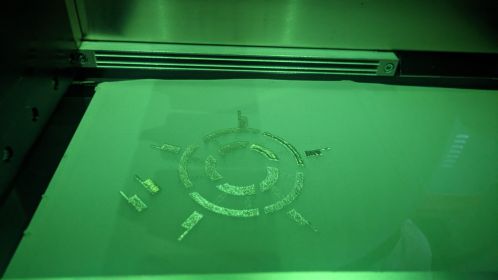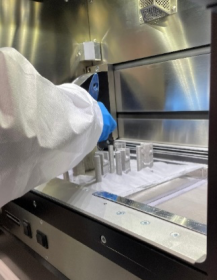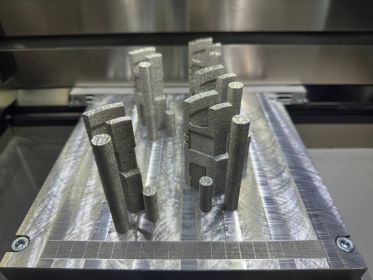
Figure 1. OERLIKON/TUM build job preparation and selection and process parameters and beam shape Images: Federico Uriati/BEAMIT
Metal Additive Manufacturing adoption of Innovative Beam Shaping Technology for Greater Efficiency and Sustainability. Beamit preliminary test in Garching for Industrial Application.
Authors: Federico Uriati (Beamit), Michele Caldarini (Beamit), Robin Prudlik (Oerlikon)
InShaPe, a groundbreaking project funded by the European Union’s Horizon Europe program, aims to revolutionize metal additive manufacturing by making it faster, cheaper, and more sustainable. The project brings together a consortium of leading research institutions and industrial partners, including Beamit.
Recently, the Beamit team embarked on a significant research and development phase at the Advanced Manufacturing Campus, where the TUM-Oerlikon Advanced Manufacturing Institute is also located.
The Beamit team focused on selecting and defining the process parameters and laser shapes most suitable for the production of real components with complex geometries. Thanks to the preliminary work carried out by TUM and Oerlikon researchers, a list of parameters guaranteeing a density greater than 99.8% was already available. The challenge was therefore to identify the optimal parameters to apply the technology to components with specific characteristics, such as inclined surfaces, variable thicknesses, and particular printing angles.
Figure 2. Powder bed pictures taken during the print. Images: Federico Uriati/BEAMIT
In collaboration with TUM and Oerlikon researchers, the most promising laser shapes were identified, and several different beam shapes were investigated, including varying ring distributions.
Some print jobs were carried out to test the effectiveness of these parameters on specific sections of a real component, a swirler used in the Oil&Gas industry. The component was sectioned to assess the impact of the different parameters on sections characterized by different geometries.
Figure 3. Depowdering of the build job and images of the first print of sections and coupons. Images: Federico Uriati/BEAMIT
The produced specimens will now be analyzed in Beamit’s laboratories to evaluate the effects of the different laser shapes on metallurgical properties, density, and surface quality. The preliminary results are very promising and it is expected that the implementation of these technologies in industrial production could lead to significant advantages in terms of productivity and savings.
This visit has allowed the Beamit team to deepen their knowledge of the advantages offered by the implementation of beam shaping in metal additive manufacturing. The results obtained are encouraging and pave the way for a future where metal 3D printing will be increasingly efficient, customizable, and sustainable. InShaPe’s overarching goal is to develop a novel first-time-right Powder Bed Fusion Process of Metals using Laser Beam (PBF-LB/M) that is not only more efficient but also significantly reduces waste and energy consumption, contributing to a greener manufacturing landscape.
Upcoming blog posts will present the results of the laboratory tests, providing a comprehensive analysis of the system performance metrics and reliability. Additionally, a discussion of the functionality and key features of the application will be included to highlight the advantages of the technology.


